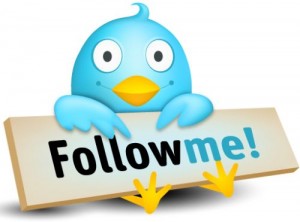Community Development
23 Jun Being Authentic with Social Marketing
The Internet is a land of anonymity and virtual appearances. Nothing is out there that you haven't provided yourself, right? On the Internet today, you couldn't be more wrong. Maybe ten years ago, people and businesses could get away with being a little less than...
15 Jun How to Hire a Rock Star Community Manager
Contributed post: Michelle Berg, President & CEO of Elevated HR Solutions.1. Don't search for a “guru” or an “expert”
There really is no such thing considering social media really hasn’t been around long enough to garner such titles. You wouldn’t go outward and say you are hiring an Accounting Expert or a Sales Guru. You hire an Accountant with personality or a Sales Executive that is driven. Typical titles in the social media world are as follows: Community Manager, Manager of Interactive Communications, Social Media Specialist, Social Media Advisor, etc. I typically advise Community Manager because of how encompassing it is. But at the end of the day, it does come down to business preference. They can be rock stars and/or kick-assed but you don’t need to place that in their title.2. Define the role
Sure seems like a no-brainer, but in my experience, this is overlooked all too often. Title aside, you need to know what it is that they are going to do. If you don’t know – then it’s almost impossible to manage them and more importantly to ensure you can measure their results and make sure they are doing what you need them to be doing.09 Jun Kill the Hype and Create a Buzz
 Going viral is the Holy Grail of social media marketing. It represents the ultimate achievement of a marketing campaign launched through the Internet: popularity that skyrockets into legendary status. However, unlike the irreverent quest for the Holy Grail depicted in a certain cult-classic film, reaching that goal isn't merely an exercise in light-hearted entertainment. It takes a good helping of know-how, some marketing finesse, and a lot of buzz.
Buzz is a marketing term that was once a mere footnote in campaign strategies, but with the advent of social media, has become the "make or break" element of any successful marketing plan. Buzz is the force that can carry a message across the globe, reaching beyond target demographic groups and regions. It's easy to see why marketers are scrambling to create buzz for their brands and products, but there are pitfalls to watch out for. Like a cinematic twist, buzz has an evil twin that it's all too commonly mistaken for called hype.
So how can you tell the difference, and what's really so bad about hype, anyway? Hype is an ad campaign whose momentum is self-generated, getting aggressively promoted and boasted about by its own source. It is the brand itself telling customers that it's entertaining and exciting, hoping for a trickle-down effect through the audience and their networks to achieve popularity. It should go without saying that this type of marketing rarely, if ever, reaches viral status.
That's why buzz is so important to strive for. Buzz is consumer-generated, which means it relies on content capturing attention and encouraging authentic sharing. It might seem like a gamble, but it's one that can easily be rigged in your favor. After all, studies have shown that up to 89% of adult Internet users in the U.S. share content amongst their contacts, and 63% of those users do so at least once a week. Incredibly, 25% of those users are sharing on a daily basis. While it may seem counterintuitive to avoid hype, blatant branding within content had little impact on whether the content was shared or became viral.
Going viral is the Holy Grail of social media marketing. It represents the ultimate achievement of a marketing campaign launched through the Internet: popularity that skyrockets into legendary status. However, unlike the irreverent quest for the Holy Grail depicted in a certain cult-classic film, reaching that goal isn't merely an exercise in light-hearted entertainment. It takes a good helping of know-how, some marketing finesse, and a lot of buzz.
Buzz is a marketing term that was once a mere footnote in campaign strategies, but with the advent of social media, has become the "make or break" element of any successful marketing plan. Buzz is the force that can carry a message across the globe, reaching beyond target demographic groups and regions. It's easy to see why marketers are scrambling to create buzz for their brands and products, but there are pitfalls to watch out for. Like a cinematic twist, buzz has an evil twin that it's all too commonly mistaken for called hype.
So how can you tell the difference, and what's really so bad about hype, anyway? Hype is an ad campaign whose momentum is self-generated, getting aggressively promoted and boasted about by its own source. It is the brand itself telling customers that it's entertaining and exciting, hoping for a trickle-down effect through the audience and their networks to achieve popularity. It should go without saying that this type of marketing rarely, if ever, reaches viral status.
That's why buzz is so important to strive for. Buzz is consumer-generated, which means it relies on content capturing attention and encouraging authentic sharing. It might seem like a gamble, but it's one that can easily be rigged in your favor. After all, studies have shown that up to 89% of adult Internet users in the U.S. share content amongst their contacts, and 63% of those users do so at least once a week. Incredibly, 25% of those users are sharing on a daily basis. While it may seem counterintuitive to avoid hype, blatant branding within content had little impact on whether the content was shared or became viral.
08 Jun How Engagement Can Turn Your Mediocre Brand into a Kick-ass Brand
[caption id="attachment_450" align="alignright" width="300" caption="Image via www.tweepi.com"] [/caption]
When I first heard about the Pepsi Refresh Project, I was blown away. The entire project is fun, social and innovative. Pepsi even scores corporate responsibility points for giving back to the community through donations.
With three separate Facebook pages for Pepsi Max, Diet Pepsi and Pepsi, nearly 70,000 Twitter followers, and an entire website dedicated to voting and discussion, Pepsi has defined the meaning of a kick-ass brand. Though they have large budgets it doesn't mean you can't do it too. So, without thousands of dollars, how can your brand kick-ass like Pepsi?
Companies are turning to social marketing and engagement to convert their mediocre brands into kick-ass brands. Are these brands the best at operations? Not necessarily. Do they have more resources? Not exactly. Do they have fewer costs? They sure don't.
These brands aren't industry leaders or the absolute best at something specific. But their personality, creativity and engagement have set them ahead of the rest to position them as a kick-ass brand.
Here are five ways to take your brand from mediocre to kick-ass status.
[/caption]
When I first heard about the Pepsi Refresh Project, I was blown away. The entire project is fun, social and innovative. Pepsi even scores corporate responsibility points for giving back to the community through donations.
With three separate Facebook pages for Pepsi Max, Diet Pepsi and Pepsi, nearly 70,000 Twitter followers, and an entire website dedicated to voting and discussion, Pepsi has defined the meaning of a kick-ass brand. Though they have large budgets it doesn't mean you can't do it too. So, without thousands of dollars, how can your brand kick-ass like Pepsi?
Companies are turning to social marketing and engagement to convert their mediocre brands into kick-ass brands. Are these brands the best at operations? Not necessarily. Do they have more resources? Not exactly. Do they have fewer costs? They sure don't.
These brands aren't industry leaders or the absolute best at something specific. But their personality, creativity and engagement have set them ahead of the rest to position them as a kick-ass brand.
Here are five ways to take your brand from mediocre to kick-ass status.

